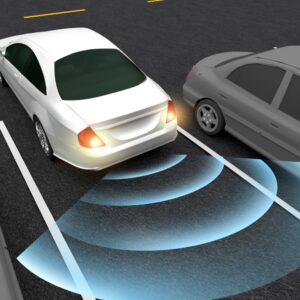As a driver, you’ll often need to merge into a busy highway from an exit ramp. Sometimes, you’ll also need to switch to a parallel lane because your current lane is about to end. Most drivers think the correct and polite way to merge is to do it as soon as possible, but that may actually not be the case.
In this article, we’ll discuss the proper technique when it comes to merging in traffic so you can calmly execute the maneuver without putting yourself and other drivers at risk.
What Usually Happens When Two Lanes Merge
If you ever need to merge because the road narrows ahead, you would probably think of turning on your blinkers and trying to merge into the next lane immediately. Nobody wants to be the late merger that forces their way into the flowing lane and causes all other drivers to slow down. At the same time, it just seems like the more courteous and less selfish thing to do. However, this practice has a few drawbacks.
Firstly, if everyone in the merging lane attempts to merge early, then it’ll force drivers in the open lane to slow down to accommodate the merging vehicles. Cars reaching the choke point will be in a single, slow-moving line of traffic. Zipper merging is a method that prevents this slowdown from occurring by maintaining the speed of all the cars involved.
What is a Zipper Merge
A zipper merge is a merging technique that emulates how zipper teeth come together as a zipper’s being closed. The cars in both lanes drive at a consistent speed and take turns merging with the other lane of traffic. This means the cars on the open lane would need to create gaps where cars from the merging lane can join seamlessly without slowing down. However, this requires drivers on the open lane to be mindful of the upcoming hazard and be considerate of the drivers on the merging lane. Meanwhile, the drivers on the merging lane also need to be quick on their feet, as they need to safely join the open lane in an alternating fashion.

How to Zipper Merge
If you’re a driver on the merging lane, you need to remember these tips:
- You need to match the speed of traffic on the open lane.
- Before you start merging into the open lane, make sure that your turn signal lights are activated several seconds before making the turn.
- Make sure your blind spot is clear and that there’s enough space before changing lanes.
- During the maneuver, make sure that you eliminate any distractions. Your full attention should be on the road and your surroundings.
These tips also apply when you’re on an exit ramp or if you’re about to enter an interstate. If all goes well, you should match the speed of traffic, find a gap, and enter it seamlessly. However, if a gap doesn’t exist or if other vehicles aren’t yielding, then you should be the one to yield.
It can also be easy to fixate on your side mirrors when you’re transferring lanes. When you’re merging lanes, you should still pay attention to the cars in front, as they can sometimes brake to accommodate other merging cars. The last thing you want is to be caught off guard and end up rear-ending someone.
Since this system uses up more road space and doesn’t slow down traffic, it can reduce congestion by 40 percent. It’s also safer since cars on the merging lane don’t need to slow down and force their right of way into the fast-moving open lane. States like Colorado and Minnesota are even educating drivers on how to zipper merge because of how much less congestion it creates. In some countries such as Belgium, drivers are even mandated by law to merge in this fashion.
The biggest drawback to this method is that it requires everyone to understand the method and cooperate to function seamlessly. The next time you find yourself on the open lane, perhaps you should allow the vehicle on the merging lane to merge seamlessly. At the end of the day, yielding and giving way can allow everyone to get to their destination sooner.
Any information provided on this Website is for informational purposes only and is not intended to replace consultation with a professional mechanic. The accuracy and timeliness of the information may change from the time of publication.



















